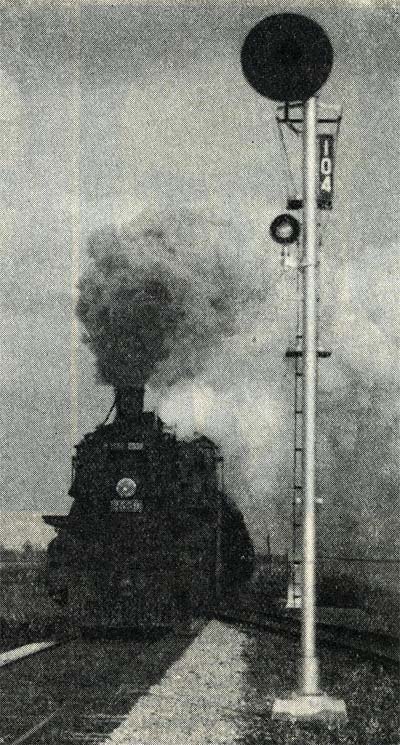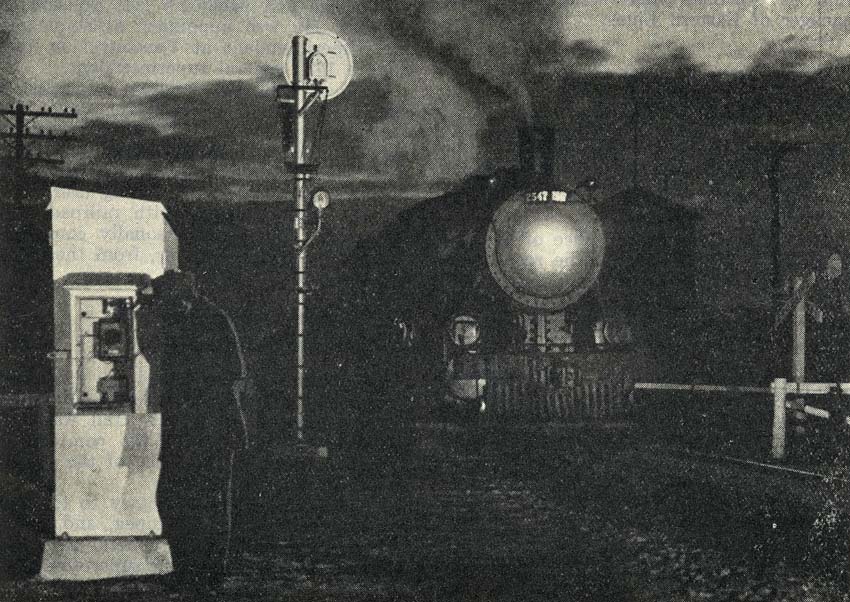
Canadian Pacific Staff Bulletin - January, 1946
FOR WINDSOR SUB

The new installation is in operation on the 108 miles of single track between London and Walkerville Junction and governs the movement of approximately 20 passenger and freight trains each day over this important subdivision.
The first automatic block signal system of this type was placed in operation on the Schreiber Division between Chapleau and Schreiber early in 1944.
Completed at a cost of $480,000, the new signal system insures, as far as is humanly possible, absolute safety in the operation of trains and brings to a total of 1,475 the track mileage guarded by block signals on the Company's Eastern Lines.
"It would be difficult to over-estimate the importance of this installation", said E.S. Taylor, Signal Engineer, Eastern Lines, while pointing out that this electric automatic block signal system calls for "stop" signals for opposing trains between passing tracks, known as "absolute" signals, and "stop, then proceed" signals for following trains, known as "permissive" signals.
No Safety Sacrificed
This type of signalling permits the closer spacing of trains following in the same direction and does not sacrifice any of the safety of the absolute block system for opposing trains between passing tracks. The signals, automatically operated from the wheels and rails, display three colours, Red, "stop", Yellow, "stop at next signal", and Green, "proceed".
The main difference between this installation and others on the system is that the new signals facilitate the meeting of trains through different arrangement at the ends of passing tracks.
An important feature is the protection given the Company's main line over six crossings with foreign roads within the subdivision.
The project took eight months to complete with work commencing on 1 Mar 1944 and calling for the installation of 148 high signals and 40 dwarfs, the latter governing the movement of a train from a passing track.
An interesting sidelight to the installation of the signals was the blitzkrieg technique employed, as pointed out by R.I. Becksted, Signal Supervisor of the Ontario District under whose supervision the work was carried out.
"We borrowed a page from the book of war", he said, "and by-passed the more difficult installations. There is a complicated set-up at Chatham, so rather than hold up the work down the line we passed and continued on the stretch from Chatham to Walkerville Junction leaving the hard spot at Chatham to be completed later."
A block signal system was already in operation from London to Lobo, a distance of six miles. In order to incorporate this stretch of right-of-way into the new set-up, five additional signals were installed and 14 existing signals relocated.
The signal mechanisms were purchased from manufacturers, but the base castings, ladders, and ladder platforms were made at Angus Shops in Montreal and assembled at London. The concrete foundations were all poured from a work train by means of a power driven concrete mixer mounted on a flat car with an engine tender to furnish the water.
Throughout the installation alternating current is used for trickle charging storage batteries, by means of rectifiers, from which batteries the signals are operated. In the event of failure of the power, these batteries will operate the signals from two to three days.
Commercial current is obtained from 14 stations along the subdivision.

 and is reprinted here with their permission. All photographs,
logos, and trademarks are the property of the Canadian Pacific Railway Company.
and is reprinted here with their permission. All photographs,
logos, and trademarks are the property of the Canadian Pacific Railway Company.